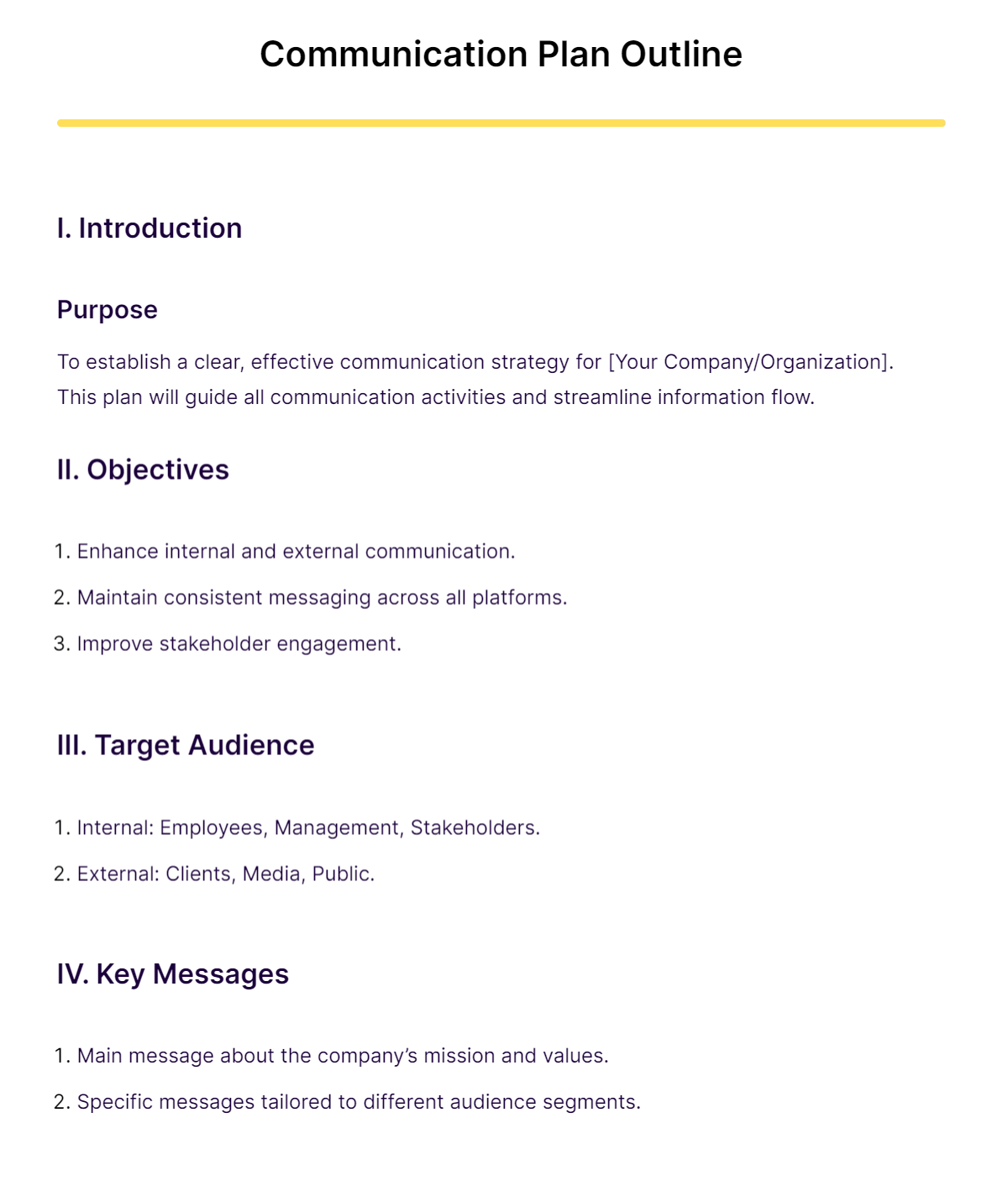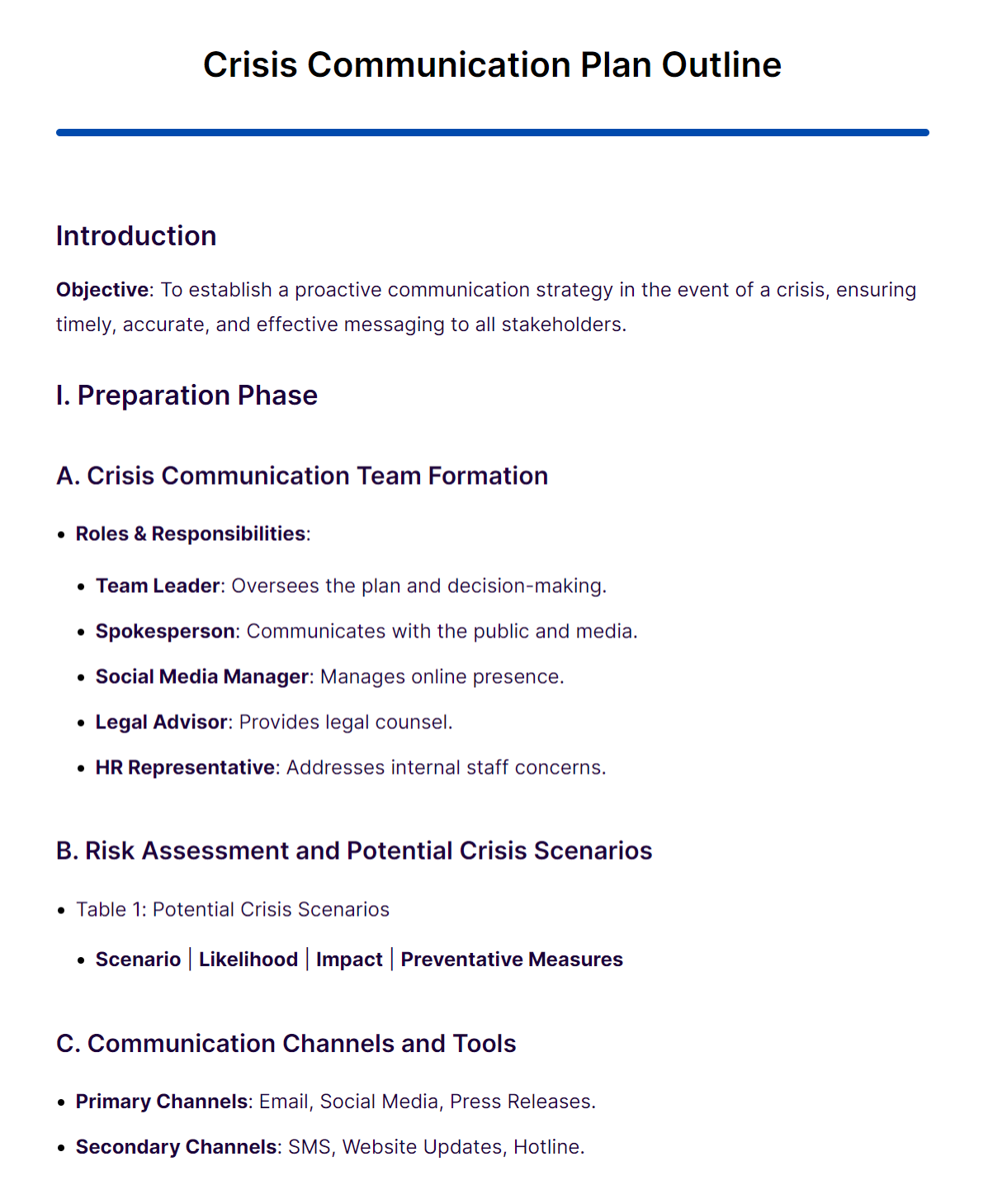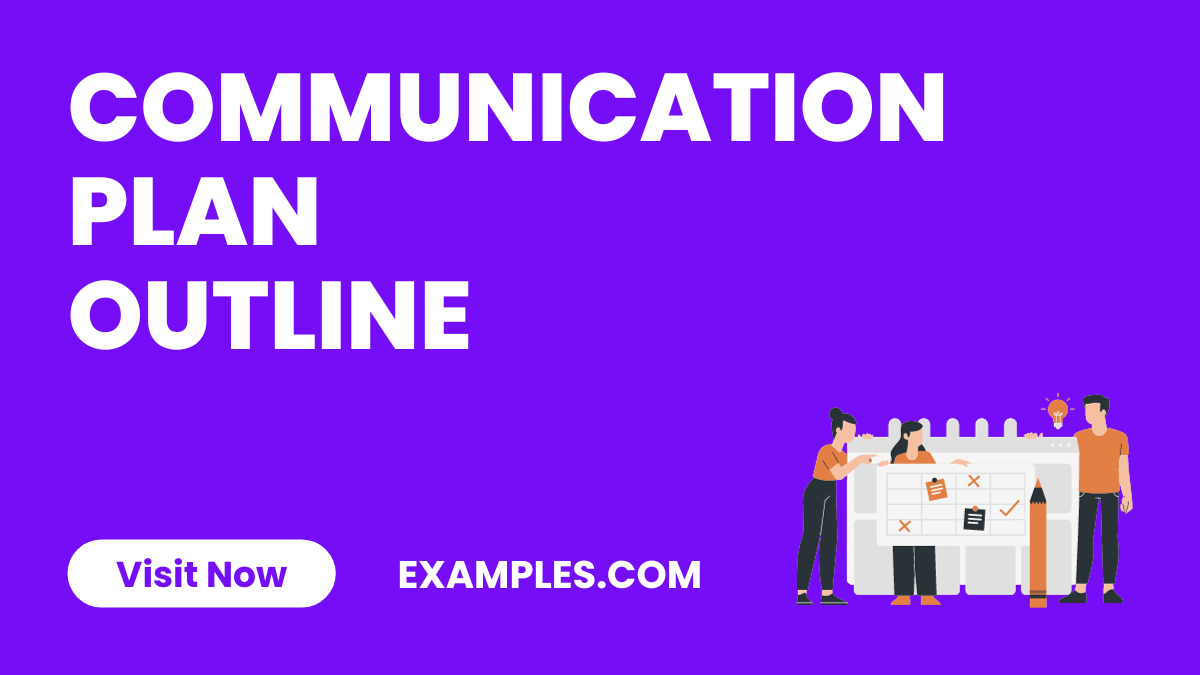Communication Plan Outline
Delve into the comprehensive guide on Communication Plan Outline, a pivotal tool for effective interaction. This guide offers a thorough exploration of various communication examples, illustrating how to craft, implement, and evaluate communication strategies. It’s tailored for both personal and professional settings, ensuring readers grasp the essential components and techniques for successful communication. Learn to navigate through complex communication scenarios with ease and effectiveness, making this guide an indispensable resource for anyone looking to enhance their communicative skills.
Download Communication Plan Outline Bundle
Communication Plan Outline

The outline for creating a communication plan includes key sections like purpose, objectives, target audience, key messages, communication channels, tactics, responsibilities, timeline, budget, and methods for evaluation and adjustment. This comprehensive guide is designed to help businesses and organizations effectively plan and execute their communication strategies, ensuring clear and efficient information dissemination both internally and externally
Crisis Communication Plan Outline

The Crisis Communication Plan Outline. It covers all necessary phases, including preparation, response, recovery, and training. The outline guides through forming a crisis communication team, assessing risks, choosing communication channels, and managing media. It emphasizes the importance of regular updates during a crisis, evaluating the response effectiveness post-crisis, and updating the plan based on feedback. The page also includes useful templates and checklists for efficient crisis management
Strategic Communication Plan Outline

The comprehensive guide to creating a strategic communication plan. It outlines key components like an executive summary, situation analysis, objectives, target audience, key messages, strategies, channels, budget, evaluation methods, risk management, and additional resources. This guide serves as an essential tool for anyone looking to develop an effective communication plan strategy for their organization or project.
Outline the Contents of a Communication Plan
A Communication Plan Outline is a vital tool for ensuring effective communication in various settings. To create a comprehensive plan, the following elements should be included:
- Communication Objectives: Define specific goals that your communication strategy aims to achieve.
- Target Audience Identification: Clearly identify the audience for your messages, considering their needs and preferences.
- Key Messages: Develop a set of core messages that align with your communication objectives and resonate with your target audience.
- Channels and Tools: Select the most appropriate communication channels and tools to reach your audience effectively. This could include email, social media, meetings, newsletters, etc.
- Roles and Responsibilities: Assign roles to team members for creating, delivering, and managing communications.
- Timeline and Frequency: Establish a timeline for your communication activities, specifying how often you will communicate.
- Budget: Outline any financial resources required for executing the communication plan.
- Measurement and Evaluation: Define metrics and methods for evaluating the effectiveness of your communication efforts.
- Feedback Mechanism: Implement a process for receiving and integrating feedback from your audience.
- Crisis Communication Plan: Prepare protocols for managing communication during emergency or crisis situations.
How do you Outline a Communication Plan?
Outlining a Communication Plan involves several critical steps to ensure its effectiveness and alignment with your goals.
- Identify Objectives: Start by clarifying what you aim to achieve with your communication, such as increasing awareness, driving engagement, or managing a crisis.
- Analyze Your Audience: Understand who your communication targets. Different audiences may require different approaches.
- Develop Key Messages: Craft clear, concise messages that convey your core information and align with your objectives.
- Choose the Right Channels: Select appropriate channels for your messages, considering factors like audience preferences and message urgency.
- Plan the Timing: Determine when to communicate your messages for maximum impact.
- Assign Roles and Responsibilities: Identify who will create, approve, and deliver the communication.
- Set a Budget: If necessary, allocate a budget for communication activities.
- Implement Feedback Mechanisms: Plan for receiving and incorporating feedback to improve future communication.
- Evaluate and Adjust: Continuously assess the effectiveness of your communication and make adjustments as needed.
The webpage on Better Evaluation discusses the creation of a communication plan, particularly for disseminating evaluation results. It emphasizes a six-question approach, focusing on identifying key communicators, communication goals and objectives, target audiences, timing and frequency of communication, methods of conveying results, and available resources. This approach ensures comprehensive planning and effective sharing of evaluation results.
The UC Merced Public Relations page on “Developing Your Communication Plan” outlines the key steps for effective communication planning. It highlights the importance of identifying the problem, crafting targeted messages, determining the appropriate audience, and choosing the right communication outlets like email, social media, or newsletters. The guide emphasizes the need for a timeline and clear task assignments for each step of the communication process. It also advises on preparing for potential questions related to communicated content, ensuring a comprehensive approach to internal communication strategies.



